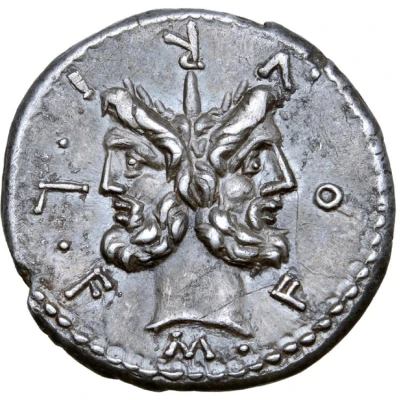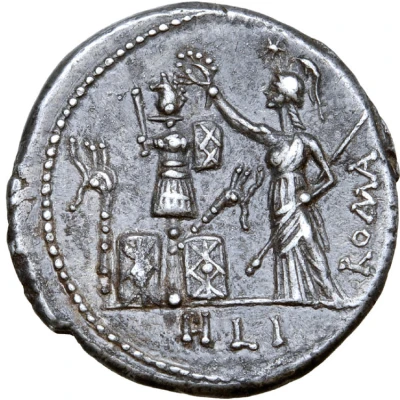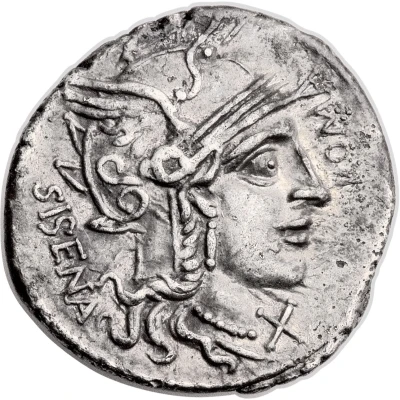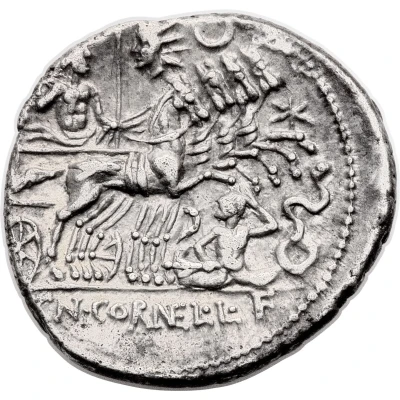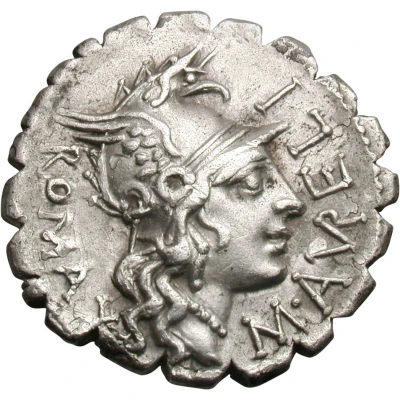
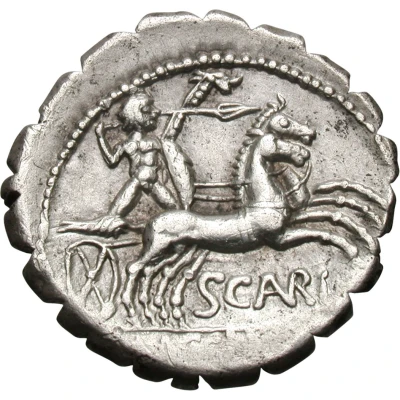

© Heritage Auctions
Denarius serratus Aurelia: Marcus Aurelius Scaurus; M•AVRELI ROMA / SCAVRI L•LIC•CN•DOM 118 BC
118 BC year| Silver | 3.54 g | 19 mm |
| Issuer | Rome › Roman Republic (509 BC - 27 BC) |
|---|---|
| Period | Republic (509 BC - 27 BC) |
| Type | Circulating commemorative coin |
| Year | 118 BC |
| Value | Denarius (1) |
| Currency | Denarius of 16 Asses (141 – 27 BC) |
| Composition | Silver |
| Weight | 3.54 g |
| Diameter | 19 mm |
| Shape | Round (irregular) |
| Technique | Hammered |
| Orientation | Variable alignment ↺ |
| Demonetized | Yes |
| Updated | 2024-10-06 |
| Numista | N#66920 |
|---|---|
| Rarity index | 94% |
Reverse
Naked Gallic warrior (perhaps Bituitus, King of the Arverni) in biga galloping right; holding shield, carnyx and reins in left hand and hurling spear with right hand.
Part of moneyer mark in field under horses with AVR in monogram.
Two other moneyer marks following each other in exergue.
Border of dots.
Script: Latin
Lettering:
SCAVRI
L•LIC•CN•DOM
Translation:
Scaurus
Lucius Licinius [Crassus]
Gnaeus Domitius [Cn. f. Cn. n. Ahenobarbus]
Comment
This coin bears three moneyer marks from three different gens. RSC lists this coin under the gens Aurelia.The gens Aurelia was a plebeian family at Rome. Gaius Aurelius Cotta was the first to obtain consulship in 252 BC, from which time the Aurelii become distinguished in history down to the end of the Republic. The Aurelii flourished under the Empire, and many later families of citizens enrolled under the authority of Emperors or magistrates bearing this nomen were also called Aurelius. The name became so common that it was sometimes abbreviated Aur., and by the latter centuries of the Empire it becomes difficult to distinguish members of the gens from other persons bearing the name.
The gens Licinia was a celebrated plebeian family at Rome, which appears from the earliest days of the Republic until Imperial times, and which eventually obtained the imperial dignity. The first of the gens to obtain the consulship was Gaius Licinius Calvus Stolo, who, as tribune of the plebs from 376 to 367 BC, prevented the election of any of the annual magistrates, until the patricians acquiesced to the passage of the lex Licinia Sextia. This law, named for Licinius and his colleague, Lucius Sextius, opened the consulship for the first time to the plebeians. Licinius himself was subsequently elected consul in 364 and 361 BC, and from this time, the Licinii became one of the most illustrious gentes in the Republic.
The gens Domitia was a plebeian family at Rome. The first of the gens to achieve prominence was Gnaeus Domitius Calvinus, consul in 332 BC. The family produced several distinguished generals, and towards the end of the Republic, the Domitii were looked upon as one of the most illustrious gentes.
Interesting fact
One interesting fact about this coin is that it features an image of a warship on the reverse side, which symbolizes the Roman Republic's military power and expansion.
